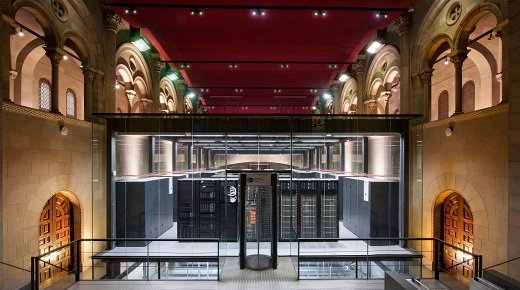
A new CMCC project has started; it will use the powerful high performance computing infrastructure of MareNostrum to provide high-resolution ocean forecasts. An example of a multidisciplinary integrated approach at the service of scientific research and progress in the field of global ocean system studies.
A new frontier in the field of ocean forecasts is now open for CMCC researchers due to a project awarded by PRACE, the partnership between the major European supercomputing centers. The leading actor is NEMO, the ocean model that will take advantage of the computing capacity of MareNostrum, the supercomputer based in Barcelona, at the University of Catalonia.
The project “Ens4Ocean – ENSemble-based approach for global OCEAN forecasting” is coordinated by Simona Masina and involves ANS and SCO Divisions from CMCC. It has been selected by PRACE (Partnership for Advanced Computing in Europe), the partnership that provides high computing capacity for scientific projects in order to improve research while supporting the latest generation technological infrastructures.
CMCC proposal has the objective to test the most advanced implementation of the NEMO model. The NEMO model allows simulations of the global ocean system at 1/16° horizontal resolution (~ 6/7 Km) and 100 vertical levels. The model will provide simulations for the period 2003-2012 while comparing and verifying results with observational data. Moreover, ensemble members will be produced every three months within the same period, that is, the model will be run with perturbed initial conditions to identify different possible trajectories.
Thus, oceanographic research has an important opportunity to improve its tools, and ocean forecasts can reach new levels of accuracy and reliability due to availability of high-resolution models such as NEMO and powerful computing infrastructures. From the results of oceanographic research we can indeed derive products and services useful to plan policy strategies and sea activities (from ship routing to fishing, trading activities, energy production and marine environment protection), and provide a higher degree of security.
Before being accepted, CMCC project had to pass a severe selection among 141 other proposals; the proposals have been examined by PRACE experts and then by an independent committee on the basis of their scientific excellence. The ENS4Ocean project is a new success story resulting from the collaboration between CMCC research teams: the ANS Division which takes care of model implementation and simulations, and the SCO Division, headed by Prof. Giovanni Aloisio, which performed preliminary tests and demonstrated that the NEMO model is suitable for a complex infrastructure such as MareNostrum. This collaboration originated at CMCC a new chance to improve ocean forecasts and enhance an integrated and multidisciplinary approach in scientific research.


